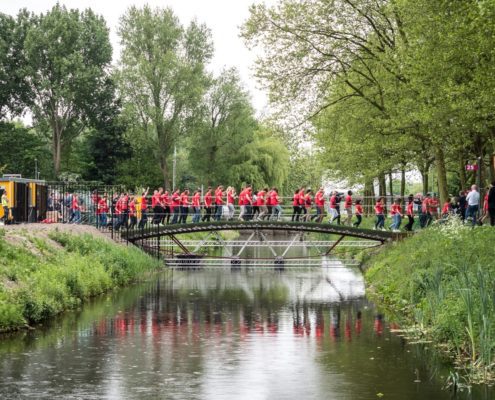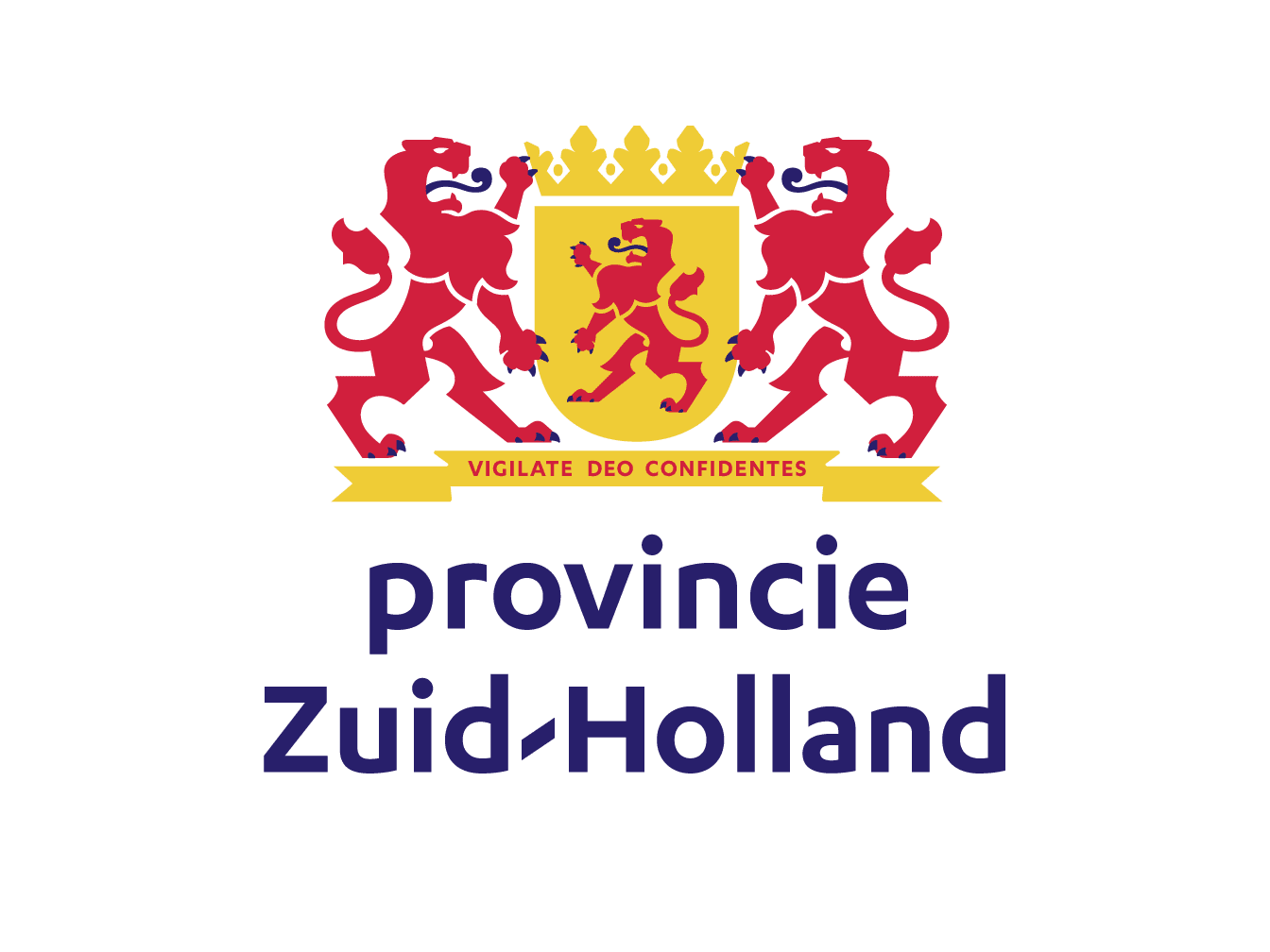The idea of the Glass Masonry Bridge was born to pave the way for glass as a new structural material for bridges. It is sustainable, made from sand and infinitely recyclable, and durable (does not corrode, rust or rot). However, people do not yet trust in the strength of glass. A bridge is the best way to demonstrate the material’s load-bearing capacity and safety.
In the spring of 2016 an innovative steel bridge with glass diagonals, the Glass Truss Bridge, was placed over the 14 meter wide canal surrounding the Green Village of the Delft University of Technology. This bridge was tested on the 16th of May 2016 by 60 students marching and dancing over it during a test loading by the Building Engineering section of the Civil Engineering and Geosciences department.
The bridge has been built at The Green Village. The team, with researchers from Faculty of Civil Engineering and faculty of Architecture, is conducting research for the proposed ‘dry assembly’ construction method. This method excludes the use of glue or other bonding substances in order to ensure that the bridge can be disassembled and rebuilt on another site.
This bridge is rented by the Green Village for a period of five years from Nijsse Beheer & Advies bv. It is the intention to replace the bridge every five years by another innovative and sustainable experimental bridge. So in 2021 the Glass Truss Bridge is replaced. We, the firm Glass Swinging Structures (=GSS), will supply this new bridge to the Green Village. It will be a Circular Arch Bridge build up from specially shaped blocks of recycled material, without the use of adhesives. Since arches function structurally due to compression, adhesives are not necessary and that means that the Circular Arch bridge can be taken apart easily.

We are going to use four types of recycled material. In the center of the span there will be 300 blocks of recycled glass. Left and right of the glass blocks 174 blocks of recycled masonry and sanitary ceramics will be placed. This “recycled brick” blocks will be produced by the firm Zilverschoon in Randwijk. The next type of block will be made from two types of recycled concrete. The mortar for this is donated by Volker Wessels firm to the Stevin II lab in Delft. There the 530 (number) “recycled concrete” blocks will be cast in computer cut timber and foam molds produced by the CAM Lab of the faculty of Architecture.
When all the different types of blocks are produced the Circular Arch Bridge will be placed om top of the existing Glass Truss Bridge. When the last block is put in its place the arch will start to function. Then Glass Truss Bridge can be lowered and taken away. Of course we are going to test the Circular Arch Bridge by another group of 60 marching and dancing students to prove beyond all doubt that it is a safe and sound circular bridge.





